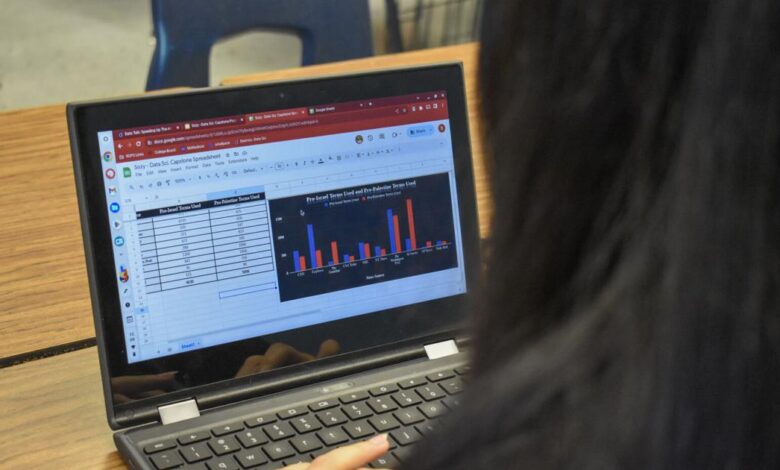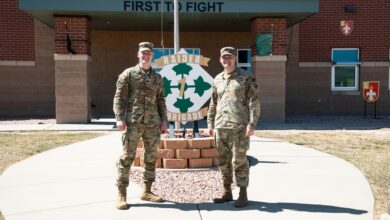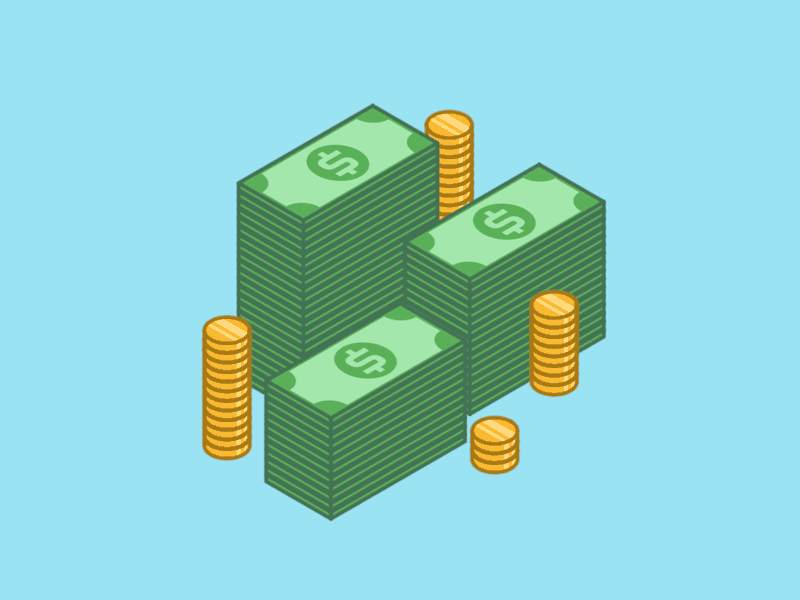New Data Science Course Teaches Critical Thinking Through Student Led Projects | News

A graph depicting the length of Major League Baseball games stood illuminated at the front of the Spotswood High School classroom.
What did the students notice?
Baseball game times have decreased over the past couple of years, but they have fluctuated for a long time. Was it related to COVID-19? Or maybe attention spans? What about rule changes?
This exercise — which ultimately showed that pitch clocks were the cause of the recent decrease — was part of a new data science course introduced by some Harrisonburg and Rockingham County teachers this year.
The class, a second-year pilot from the Virginia Department of Education, taught students to use and understand data through interest-based projects.
In 2022 and 2023, the Virginia Board of Education approved data science learning standards for a high school data science course and updated math learning standards to infuse more data analysis.
“Data science itself is a very quickly growing field in the employment world, and our students are not prepared for that,” said Jarad Buckmaster, a math and data science teacher at Spotswood High School. “So Virginia wanted to be on the leading edge of the country for creating educational opportunities for data science.”
After introducing the new standards, 19 schools first piloted a new data science course in the 2022-23 school year. Roughly 50 teachers from 23 school divisions — including Harrisonburg and Rockingham county schools — added the course this academic year. Even more are expected to join in the 2024-25 school year, according to Data Science 4 Everyone.
According to an EducationWeek interview with one of the leads for the data science course development and pilot team, the course combines skills in math, statistics and computer science. The largely project-based course teaches students to create data visualizations and models and perform data analytics to form predictions and communicate their findings.
Teachers like Buckmaster, who were part of the second-year data science pilot course, attended a three-day institute covering the standards and the resources used to teach the course. Buckmaster said the state was “very clear” that they wanted the course to be taught using project-based lessons and, even more importantly, student-led project-based lessons.
“The whole basic concept is we’re working with very large data sets,” Buckmaster explained. “They go out and find [data on] topics they’re interested in. Then I go through the process of teaching them what they can do with all this data.”
For Jeff Mumaw, one of the data science teachers at Harrisonburg High School, teaching the new class was an opportunity for him to explore something exciting and new. while also introducing students to a very practical form of math.
“Oftentimes with teaching from a math side of things, students are going to go ‘Hey, when am I going to use this?’” Mumaw said, “Well, this class is very valuable for students because we’re collecting lots of data, so we need to be able to work with that data in a variety of ways and make healthy, good decisions based on what we find in the data.”
After a year of learning everything from bivariate data and programming to cleaning data spreadsheets and creating graphs, local students ended the class with a final project — an aspect of the class that’s been rewarding for teachers and students alike.
“This is a work in progress, but my favorite part is the final project that I have them do where they ask a big question and then try to find the data to support the big question,” Mumaw said. “This is very student driven. … When they share their results, it’s a pretty cool thing because they’ve been watching each other and coaching each other.”
Similarly, for Buckmaster, the best part of the class has been watching students explore projects they’re deeply interested in.
“You can really see them get excited about [their topic], and that’s fulfilling as a teacher,” Buckmaster said.
At Spotswood High, students explored everything from gender to gas prices.
Sozy Omer, a senior at Spotswood, explored media biases in the coverage of the Israel-Gaza War, looking at the language used by 10 different news publications to determine if they had a pro-Israel or pro-Palestine bias.
“I’m Kurdish, so I’m Middle Eastern, and I also have a passion for politics. And this conflict is something that I really care about,” Omer said. “It’s also something that I question myself. I know when I’m reading articles, in the back of my head, I’m always like, ‘There’s no way this is neutral or the truth, almost always, it’s going to be biased.’”
With the data she used, she found that some organizations, like Al Jeezera, used more pro-Palestinian words, but 70 percent of the organizations she analyzed used more pro-Israel language.
“Whether or not the results of this research project are accurate or definitive, I think it raises an important question about the media and where we get our news from,” Omer said.
Since the class is new for Harrisonburg and Rockingham County teachers and students alike, it hasn’t been without challenges. Buckmaster and Mumaw said coaching and motivating students to explore big questions without outright giving them answers has been a learning process. And with all her passion, Omer said she doesn’t always have the time to explore everything she’s interested in.
In the end, though, Buckmaster said the class is all about critical thinking and getting a creative outlet through math.
“It’s all about thinking,” Buckmaster said. “It forces them to be creative and think of the bigger picture and use math in ways that are more real-world based.”
And Omer learned that not everything is what it seems — both through her project and exploring other data sets in the class.
“Look after the things you’re curious about, and don’t judge based off what someone says, not just based off of a headline or what you hear,” Omer said. “Not everything is what you think it is on a surface level.”



